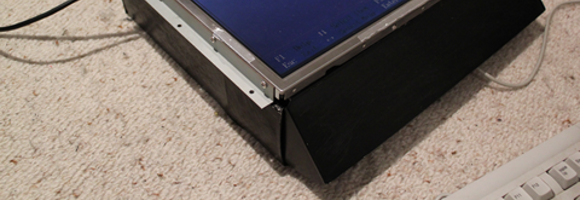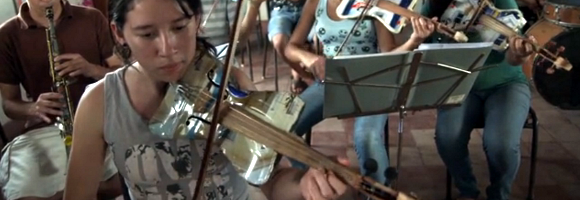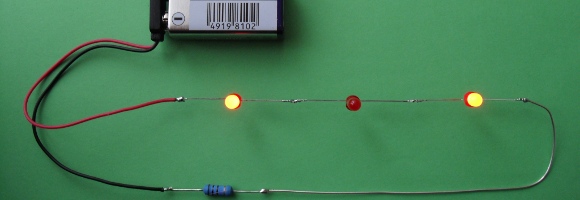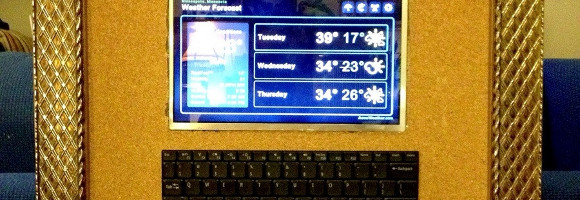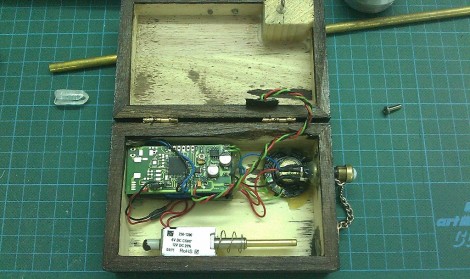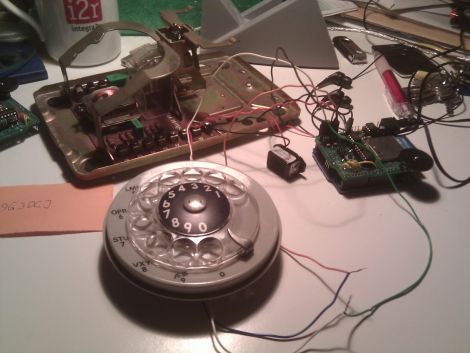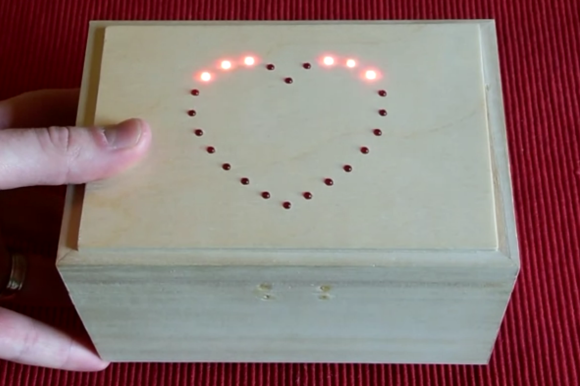
Here’s a new take on a gift box which has been locked from the inside. I doesn’t rely on GPS coordinates or a real-time clock to unfasten the latch. Instead, the box itself acts as a puzzle. You follow the visual and audio clues, turning the box along three axes in order to input the unlock code.
There are three different difficulty settings. The easiest uses the LED heart to indicate which direction to turn the box next. This is accompanied by a beep for correct or a longer tone for incorrect movements. On the medium setting you can only go by the tones, but once you screw up the lights will aid you in getting back to where you where when making the mistake. The impossible setting doesn’t use the lights at all.
[Matt] took inspiration from some reverse geocache projects featured here on Hackaday. He already had an STM32F3 Discovery board on hand which he received as a sample. It’s driving all of the electronics inside, with the on-board gyroscope as the input device. Don’t miss the video after the break to see how well the thing works.
Continue reading “Valentine’s Puzzle Box Makes You Work For What’s Inside”

